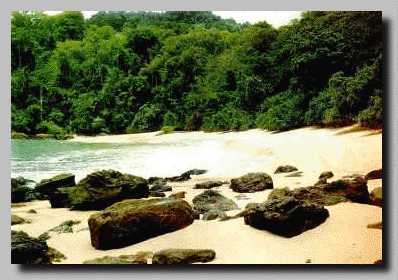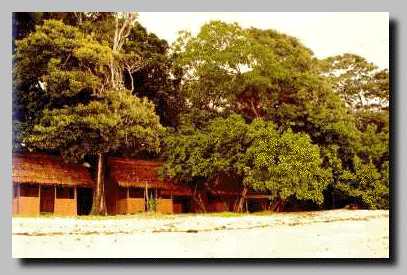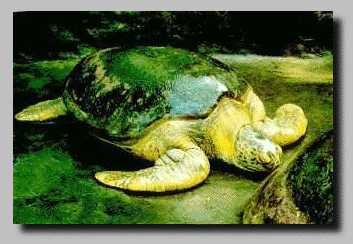|
South
Banyuwangi and Meru Betiri
The National
Parks of South Banyuwangi and Meru Betiri can be found in East
Java's south eastern comer. South Banyuwangi, or Alas Purwo as it is known locally, occupies the whole of the shoe shaped
peninsula in the extreme south east, an area of just over 43,000
hectares.
The land is largely flat and covered with natural rain
forest and plantations of teak. The highest point is Mt. Lingga
Manis which rises just 322 m. above sea-level.
Teluk
Hijau ( green Bay ), a small, sheltered cove at Meru Betiri.
 |
|
Teluk
Hijau ( green Bay ), a small, sheltered cove at Meru Betiri.
 |
|
| Alas Purwo is known to history as being
a part of the ancient kingdom of Blambangan, which for centuries
maintained a close relationship with neighbouring Bali. Not surprising,
then, to find that many traditional ceremonies in Banyuwangi,
especially those involving the fishing community, are very similar
to those of the Balinese. South Banyuwangi National Park is home
to a variety of native fauna, the most well known of which is
undoubtedly the banteng, which can be seen here in considerable
numbers as at Baluran. In addition, there are wild pigs, deer,
monkeys, peacocks, jungle fowl, as well as more than 20 species
of immigrant birds from Australia. While not so well known as
neighbouring Sukamade, South Banyuwangi also has beaches which
provide safe nesting areas for at least four varieties of sea
turtle. Simple but comfortable accommodation is available at
the coastal village of Grajagan, from where Trianggulasi Beach
and the grazing ground at Sadengan lie within a short distance.
Another of the Park's attractions is Plengkung, reputed to be
one of the world's finest surfing beaches and a two and a half
hour journey by fishing boat across the bay from Grajagan. |
The
green Turtle ( chelonia mydas) nests regularly at sukodame beach ,Meru Betiri.
 |
|
|



